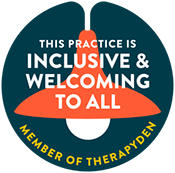Whether an ASD individual is verbal or nonverbal, communication challenges may still arise. In this article, tools will be addressed to assist a child with ASD, who may need support with anger and tantrums.
Grief and the Holidays
While the holidays may bring celebration and joy, they can also be a difficult time for others, especially those who are in the midst of grief.
Grief can be experienced with many kinds of profound loss (death of a loved one, death of a pet, loss of a job, loss of a relationship, moving, health diagnosis, etc).

Here are some suggestions to manage the holidays when you are grieving:
- Expectations — Acknowledge that the holidays will likely be different this year. The only expectation to hold is that the holidays may be DIFFERENT this year. There may be times of sadness, anger, loneliness, gratitude and/or joy; all are normal.
- Choose your Holiday Activities: It is okay if you don’t want to decorate as much or plan to forgo the usual festivities. It’s also okay to celebrate as you usually do or in a totally different way this year. There are no “shoulds” or “musts.” Only do what is right for you. Decorate if you want, skip decorating, decorate totally differently or delegate decorating for someone else. Consider a new tradition if it feels right.
- Plan Ahead and Have an Exit Strategy. Decide ahead of time what activities you will do and what you may skip. Your energy levels may be low during grief so it’s helpful to plan accordingly. Discuss your plans with those family and friends who may be involved in your holiday celebrations. Share with them that you reserve the right to change your mind at the last minute if your energy level and mood are low. It will help avoid unrealistic expectations and hurt feelings. It’s okay to change your mind at the last minute about attending dinners, parties or to leave a function early.
- Allow Yourself Time and Space as needed. Give yourself time to reflect on memories and express your feelings. Be mindful of your need for quiet and solitude.
- Share Your Feelings. Talk about your feelings and memories with trusted friends or family who will accept you and your feelings. Talk about all the feelings — the happiness, the sadness, the regrets, the frustrations. Consider joining a grief support group (see resources below) or seeking counseling. Grief support groups are often free.
- Have a Good Cry. Tears help release intense feelings and are a natural expression of grief that also help lower stress (cortisol) levels.
- Consider Journaling. Journaling can be a very helpful tool when grieving. Consider writing a letter to your loved one sharing your current feelings.
- Ask for Help. Tell others when you need help and be as specific as possible. For example, “l need to talk to someone about my Dad today. Would you listen and be with me for an hour or so?”
- Take Care of Your Physical Health. Try to get adequate rest, eat nutritious foods, and exercise if you are able — even a brisk walk or time in nature can be helpful. Grief often includes symptoms such as disrupted sleep, headaches, low energy, shortness of breath, nausea, and weight loss. Listen to your body and if you need extra rest or medical attention, make sure you are getting it!
- Engage in Small Pleasures. Do not underestimate the healing effects of small pleasures as you are ready. Watching a sunset, spending time in nature, enjoying a favorite food or tradition. All are small steps toward regaining your pleasure in life.
- Do Something Good For Others. If you are able, consider doing something for others. It doesn’t need to be a grand gesture. For example, donating a few canned goods to the local food bank. Helping others can be a way of channeling your grief.
- Be Kind To Yourself. Grief is a non-linear process. Sometimes after a period of feeling better, we find ourselves in old feelings of extreme sadness, despair or anger. This is normal because, as humans, we cannot process all of the pain and meaning of profound loss at once. There are often many secondary losses one experiences during the first year of grieving. For example, hearing a song on the radio that brings back a specific memory and reminds you of your loss. Some days will be more difficult than others. Don’t place unreasonable expectations on yourself or fault yourself for “not getting over it sooner.” If you feel joyful in the moment, it’s okay to experience joy. If you feel sad in the moment, it’s okay to experience sadness. All feelings are valid.
For more information, please see resources below:
https://www.frederickhealthhospice.org/grief-loss/ Grief Support Groups
https://www.montgomerycountymd.gov/HHS/Resources/Files/HoTTopics/Grief%20and%20Bereavement%20Resources%2011-2020.pdf — Several Grief Support Groups in Montgomery County
https://www.jssa.org/services/hospice/grief-support-groups/ Teen Suicide Support Group, Adult Children Who Have Lost a Parent Support Group, Loss of Spouse Support Group, COVID Loss Support Group, Adult Suicide Grief Support Group
https://www.wisesayings.com/grieving-support-guide/ Several Resources Organized in Sections by Topic (e.g. Grief Support for Widows, Military Families, Suicide Survivors, etc.)
https://robertashouse.org/ Support Groups for Homicide Grief Support
www.bereavedparentsusa.org For Parents Who Have Lost a Child
https://www.loveinthetrenches.org/grief-support-group Zoom Support Groups for Parents Who Have Lost a Child to Overdose or Addiction
https://www.mdcoalition.org/support_group/our-healing-hearts-online-grief-support-group-for-parents-who-have-lost-a-child-to-overdose/ For Parents Who Have Lost a Child to Overdose
https://elunanetwork.org/camps-programs/camp-erin/ — Grief Camp for Children & Teens
https://www.griefshare.org/countries/us/states/md/cities/frederick Christian Grief Support Groups
Follow us for more wellness content!
More Blog Posts

Tools to Address Autism Anger and Tantrums

A Compassion Meditation
This meditation is utilized in Compassion Focused Therapy. It helps to generate a sense of compassion when you are struggling with difficult emotions. It is especially useful when you are having a hard time with self-compassion, because you are drawing the compassion from an outside resource. Enjoy!

Building Adolescent Emotional Resilience
Resilience is the ability to recoup following adversity such as elevated stress or trauma. Resilience does not mean that stress does not affect you or that you avoid struggles in life. Resilience is feeling confident that you are capable of effectively managing challenges and regulating emotions.

Reframing Your Thoughts: A Powerful Tool for Mental Health
Have you found yourself in a cycle of negative thinking that you can’t seem to break? This type of thought pattern, although common, can be destructive to a person’s psyche. Challenging these thoughts and unconstructive patterns is an instrumental component to break this cycle; a technique called reframing your thoughts.
In crisis or need immediate help?
Call 988 or go to your nearest ER.
Services
Adolescent Psychotherapy
Adult Psychotherapy
Assessments & Evaluation
Child Psychotherapy
Cognitive Behavioral Therapy
Couples Therapy
Family Therapy & Parent Coaching
Genetic Testing
Group Therapy
Medication Management
Play Therapy
Single-Session Therapy
Teletherapy
Orchard Mental Health Group
Accepted Insurance*
Aetna
Carefirst / Blue Cross Blue Shield
Cigna
Humana / Tricare
Johns Hopkins Health Plans
Medicaid
Medicare
Optum / UnitedHealthcare
*Varies by service
Partner Resources
Contact Us
M-F, 9am-5pm Eastern Time
Phone: 240-750-6467
Fax: 240-912-7835
contact@orchardmentalhealth.com
9707 Key West Avenue, Suite #100 Rockville, MD 20850


















